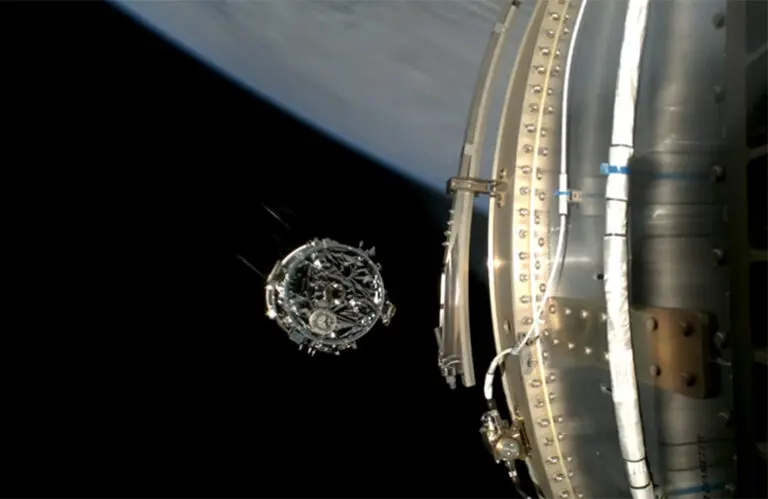|
Listen to this article  |

A screen grab from a NASA broadcast shows a Northrop Grumman Cygnus cargo spacecraft on its way to the International Space Station on Jan. 30, 2024 with the spaceMIRA from Virtual Incision onboard. | Source: NASA
Virtual Incision’s MIRA surgical robot system has made it to the International Space Station (ISS).
Lincoln, Nebraska–based Virtual Incision received a grant in 2022 for the MIRA platform to be used in a technology demonstration aboard the ISS. The National Aeronautics and Space Administration (NASA) awarded the grant to use the miniaturized robotic-associated surgery (RAS) platform on the 2024 technology demonstration mission.
The company said its spaceMIRA device sat aboard a Northrop Grumman Cygnus cargo spacecraft carried by a SpaceX Falcon 9 rocket. It says the robot will assess the impact of zero gravity when performing simulated surgical tasks. During a portion of the experiment, the company plans for a surgeon operator at its Nebraska headquarters to remotely control the robot.
Virtual Incision believes the miniaturization of RAS could offer a breakthrough in remote robotic surgery. The company feels it could simplify workflows at the patient site. Its MIRA device offers a small form factor RAS option roughly 1,000 times lighter than existing technologies.
“As thrilling as it is to have our technology in space, we expect the impact of this research will be most notable on Earth,” said John Murphy, president and CEO of Virtual Incision. “The introduction of miniRAS has the potential to revolutionize healthcare by making every operating room robot-ready. We are taking a significant step by developing MIRA, an investigational device currently under review by the FDA. The testing with spaceMIRA will tell us more about the future potential of miniRAS as it might be applied to remote surgery applications.”
More about the Virtual Incision MIRA platform

The MIRA surgical robot. | Source: Virtual Incision
MIRA includes a small, self-contained surgical device inserted through a single midline umbilical incision in the patient’s abdomen. It allows for complex, multi-quadrant abdominal surgeries. The system also uses existing minimally invasive tools and techniques that are familiar to surgeons. Altogether, MIRA weighs about two pounds.
The platform received IDE approval in October 2020, followed by approval for an IDE supplement in April. Virtual Incision submitted MIRA to the FDA for de novo review in May 2023.
In November 2021, Virtual Incision completed a $46 million Series C financing round to support the robotic surgery platform. Virtual Incision then raised $30 million more in September 2023.
“When we started this work at the University of Nebraska, we shared a collective vision that miniRAS could make robotic-assisted surgery available to any patient, any time, anywhere,” said Shane Farritor, co-founder and chief technology officer at Virtual Incision and professor of mechanical engineering at the University of Nebraska. “Exploring the use of miniRAS in extreme environments helps our teams understand how we can remove barriers for patients.”
The rocket that carried MIRA to the ISS also carried GITAI’s latest robotic system, S2. S2 is the Torrance, Calif.-based company’s dual-armed robotic system. Now that it has been delivered, the ISS crew will mount S2 on the Nanoracks Bishop Airlock, and the robot conduct an external demonstration of in-space servicing, assembling, and manufacturing (ISAM).
NASA broadcasted the launch of the spacecraft carrying MIRA. Watch here:
Editor’s Note: This article was syndicated from our sister site MassDevice.
Credit: Source link


Comments are closed.